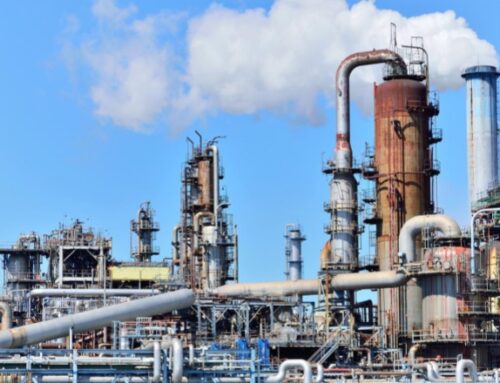
According to a new study in the international academic journal “Proceedings of the National Academy of Sciences”, a one-liter bottle of water contains about 240,000 plastic particles on average. The researchers say many of these particles have not been detected in the past, suggesting that health concerns related to plastic pollution may be greatly underestimated…
The peer-reviewed study was published Monday in the journal “Rapid single-particle chemical Imaging of nanoplastics using SRS Microscopy.” The study is also the first time the global scientific community has assessed the presence of “nanoplastics” – plastic particles less than one micron in length, equivalent to less than one-seventieth the width of a human hair.
The findings suggest that bottled water may contain hundreds of times more plastic particles than previously estimated, as previous studies only took into account microplastics – that is, plastic particles ranging in size from 5 millimeters to 1 micron.
Nanoplastics pose a greater threat to human health than microplastics because they are small enough to penetrate human cells, enter the bloodstream and affect organs. Nanoplastics can even pass through the placenta and into the body of an unborn baby.
Scientists have long suspected that bottled water contains nanoplastics, but have lacked the technology to identify individual nanoparticles – past studies have largely stopped at the 1-micron threshold.
To overcome this challenge, the study’s co-authors used a new microscopy technique called stimulated Raman scattering microscopy (SRS) and programmed a data-driven algorithm to analyze about 25 1-liter bottles of water purchased from three popular U.S. brands using both techniques.

Ultimately, they found 110,000 to 370,000 plastic particles per litre of water, 90% of which were nanoplastics. The researchers did not disclose the names of the bottled water brands involved.
“This study provides a powerful tool for solving difficult problems in the analysis of nanoplastics and is expected to bridge the current knowledge gap regarding nanoscale plastic pollution,” said Naixin Qian, a researcher in Columbia’s Department of Chemistry and first author of the study.
Beizhan Yan, an environmental chemist at Columbia University and co-author of the study, added, “Previously, this was a dark area of unknown territory. This research opens a window into a world we’ve never been exposed to before.”
What’s the harm?
It is reported that the researchers mainly focused on seven specific nano plastic particles that are rare in the above bottled water, such as polystyrene, polyvinyl chloride, polyethylene terephthalate (PET) and polyamide.

One of the most common types of nanoplastics they found was PET, which is the most commonly used plastic in the bottled beverage industry. The particles were likely abrasive into the water when the bottle was squeezed or when the cap was repeatedly screwed on or off.
Another common plastic particle found in bottled water samples is polyamide. Beizhan Yan, one of the study’s co-authors and a research professor of geochemistry at Columbia University’s Lamont-Doherty Earth Observatory (LDEO), believes that the particles may actually come from filters designed to purify water.
In addition, they found many unidentified nanoparticles in the water. If any of these are also nanoplastics, the amount of plastic in bottled water could be even higher.
More than 450 million tons of plastic are produced globally each year, most of which ends up in landfills. The vast majority of plastics do not degrade naturally, but break down into smaller pieces over time. Products containing plastics often drop small plastic particles during use, including many chemical fiber fabrics.
And while plastic pollution is everywhere on Earth, scientists are particularly interested in bottled water because of its potential to introduce microplastics into the human body. A study published in 2022 found higher concentrations of microplastics in bottled water than tap water. A 2021 report warned that simply opening and closing the water caps on plastic bottles can release tiny plastic particles into the liquid.
To date, there has been little research into the effects of nanoplastics once they enter the bloodstream. But there is plenty of evidence that the chemicals used in plastic production are harmful to human health and mammalian reproduction. Even if nanoplastics are harmless on their own, they can become carriers for dangerous chemicals used in plastic production, such as bisphenol, phthalates, dioxins, organic pollutants, and heavy metals, which are harmful at high doses, increase cancer risk, and affect critical organs such as the kidneys, liver, heart, reproductive, and nervous system. They can also accumulate through the food chain.
Wei Min, a biophysicist at Columbia University and co-author of the study, said: “Nanoplastics are a huge world to study. Even though nanoplastics account for 90 percent of the plastic particles in bottled water, their quality is still much lower than that of bottled water. But even so, the fact is not comforting – it’s not the proportion that matters, it’s the quantity, because the smaller the particles, the easier it is for them to enter our bodies.”
Article from M&J International Trading Co., Ltd





